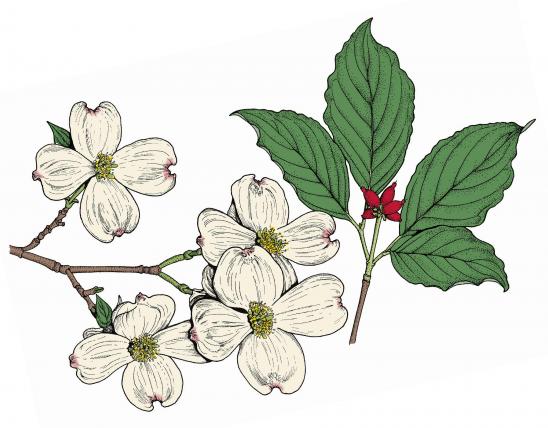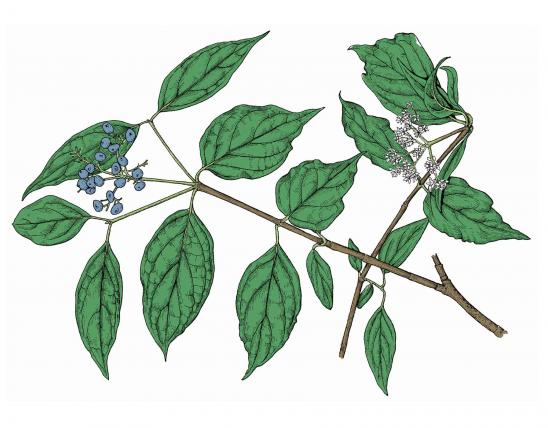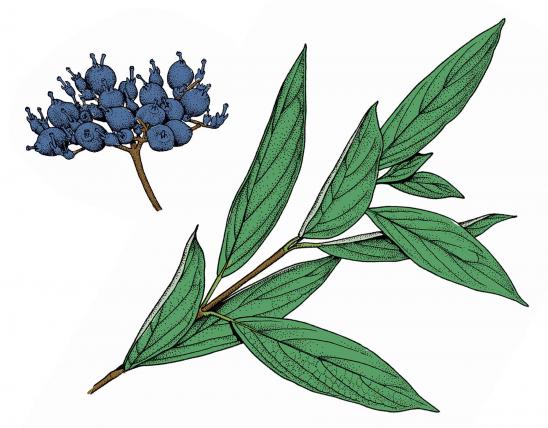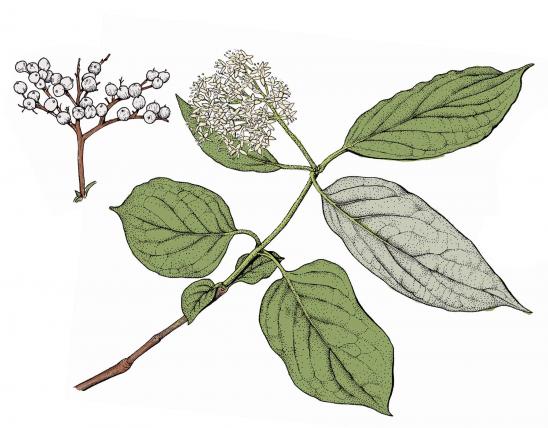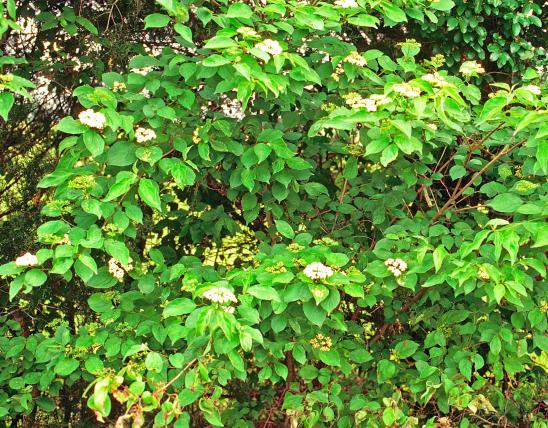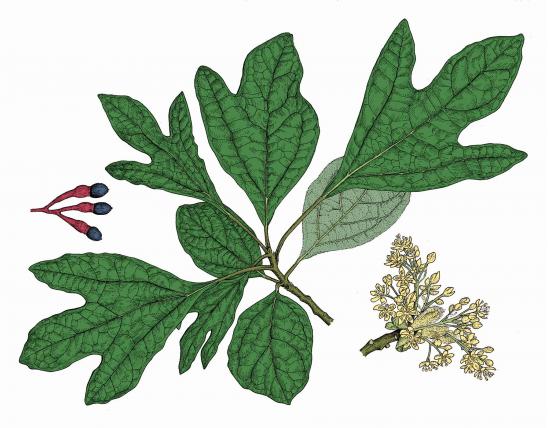
Alternate-leaved dogwood is a shrub or small tree with branches often in tierlike layers.
Leaves are simple, mostly alternate, often crowded near the end of twig, 2–5 inches long, egg-shaped or widest in the middle, edges smooth, tip pointed; upper surface smooth, dark green; lower surface paler, hairy, with lateral veins 4–6 on each side, conspicuous; leaf stalk ¾–2¼ inches long.
Bark is thin, dark reddish brown, smooth or grooved and broken into irregular narrow ridges.
Twigs are often horizontal or ascending, slender, smooth, green.
Blooms May–June. Flowers white to cream-colored; flower cluster broad or flat-topped, 1¼–2½ inches wide; sepals minute or absent; petals 4, about ⅛ inch long.
Fruits July–September, borne on a red stalk, round, fleshy, 1-seeded, bluish black, about ⅓ inch long.
Similar species: When not in flower, this species could be confused with flowering dogwood, but that species has opposite (not alternate) leaves. There are 5 species in the genus Cornus in Missouri. This is the only one with alternate leaves.
Height: to 18 feet.

Found naturally in central and northeast Missouri, and south through the central Ozarks. Cultivated statewide.
Habitat and Conservation
Grows on wooded, north-facing slopes and along wooded banks of streams. A popular ornamental for its fleshy fruits, which attract birds, and for the yellow to red fall foliage. In cultivation, it prefers naturalized plantings in partial shade.
Status
Native Missouri shrub or small tree. Strong landscaping value as ornamental and for wildlife.
Human Connections
This species is a good landscaping replacement for the cold-sensitive flowering dogwood in the northern part of the state. Like other dogwoods, the wood is hard and is fashioned into many objects.
Ecosystem Connections
Deer and rabbits browse the leaves and several types of birds eat the fruits. This species also provides important cover and nesting habitat for several types of animals.
























